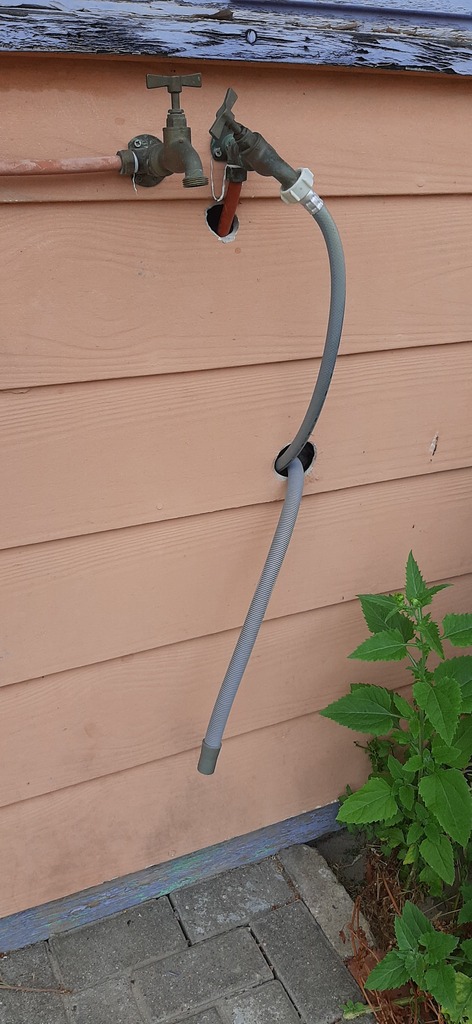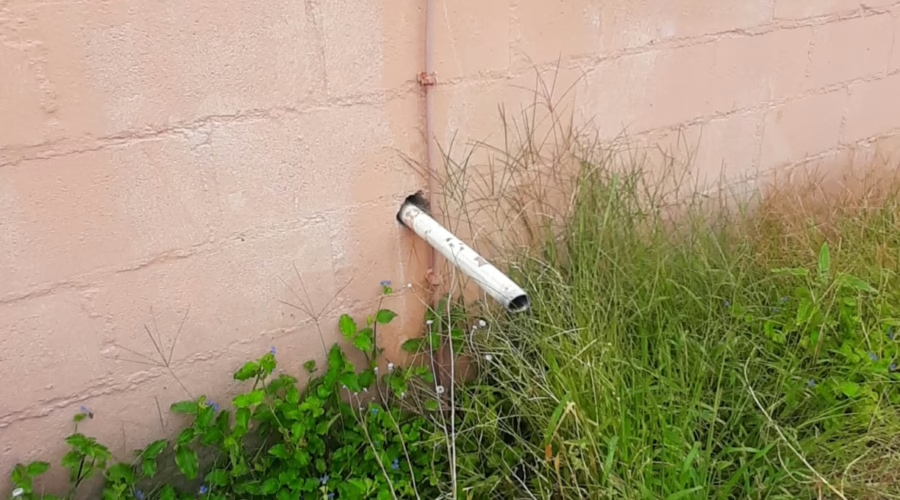Down the Drain – When Greywater Becomes a Grey Area
Introduction
A home’s plumbing system is essential for sanitation and hygiene. Yet, when untreated greywater is allowed to drain directly into the yard instead of being connected to a proper waste management system, the results are not only unsanitary but potentially illegal. The issue is compounded when multiple drains, including kitchen and bathroom sinks as well as washing machines, all release untreated water into the environment, creating pooling, festering hazards outside the home.
The Issue: Untreated Greywater Discharge
- Sanitation Risks
- Greywater contains food particles, grease, detergents, and other contaminants that can create unsanitary conditions when improperly disposed of.
- Pooling water outside the kitchen window and around the home fosters bacterial growth and attracts pests, posing significant health risks to occupants and neighbors.
- Environmental Hazards
- Detergents and other chemicals in greywater can contaminate the soil, harm plant life, and potentially leach into groundwater.
- Stagnant pools of greywater increase the risk of mosquito infestations, spreading diseases like malaria and dengue fever.

- Structural Damage
- Continuous water pooling around the home weakens the foundation and contributes to long-term structural damage.
- Mold and dampness become inevitable, spreading to nearby walls and further degrading the living environment.
Legal Framework for Addressing Improper Wastewater Disposal
- Municipal By-laws
- Most municipalities require properties to be connected to a proper sewage or drainage system to handle wastewater, including greywater.
- Discharging untreated wastewater directly into open spaces or yards is prohibited under municipal health and sanitation regulations.
- Water Services Act (1997)
- Mandates proper wastewater management to protect public health and prevent pollution of the environment.
- National Environmental Management Act (1998)
- Regulates activities that could harm the environment, including improper disposal of pollutants like untreated greywater.
- Rental Housing Act (1999)
- Obligates landlords to provide properties that meet basic health and safety standards, including proper plumbing systems.
Landlord and Municipal Responsibilities
- Landlords:
- Repair plumbing systems to ensure all wastewater is properly connected to a sewage or drainage system.
- Address any contamination or health hazards resulting from improper greywater disposal.
- Municipal Authorities:
- Conduct inspections to ensure properties comply with sanitation regulations.
- Enforce corrective measures or impose penalties for non-compliance with drainage and waste management laws.
Steps for Occupants and Concerned Neighbors
- File a Formal Complaint:
- Submit a complaint to the local municipality, citing health hazards and non-compliance with sanitation by-laws.
- Include photographic and video evidence of the greywater pooling in the yard.
- Escalate the Issue:
- If municipal authorities fail to act, approach public health departments or environmental agencies for intervention.
- Protect Against Immediate Risks:
- Limit exposure to pooling greywater and consider temporary measures, such as redirecting water away from living spaces, until the issue is resolved.
Conclusion
Improper greywater disposal is a silent threat that compromises sanitation, health, and the environment. This issue highlights the landlord’s failure to maintain basic plumbing systems and the municipality’s lack of oversight in enforcing sanitation standards.
Residents and neighbors must advocate for immediate corrective actions to ensure proper wastewater management and a safe living environment. The risks of inaction are too great, not just for the occupants but for the broader community.
Legal Context for the Right to Publish
This article is published in accordance with:
- Section 16 of the Constitution of South Africa (1996): Protects the right to freedom of expression, including reporting on public health hazards.
- Promotion of Access to Information Act (PAIA) (2000): Guarantees the right to access information necessary to protect public health and safety.
- National Environmental Management Act (1998): Ensures transparency and accountability in matters of environmental protection.


